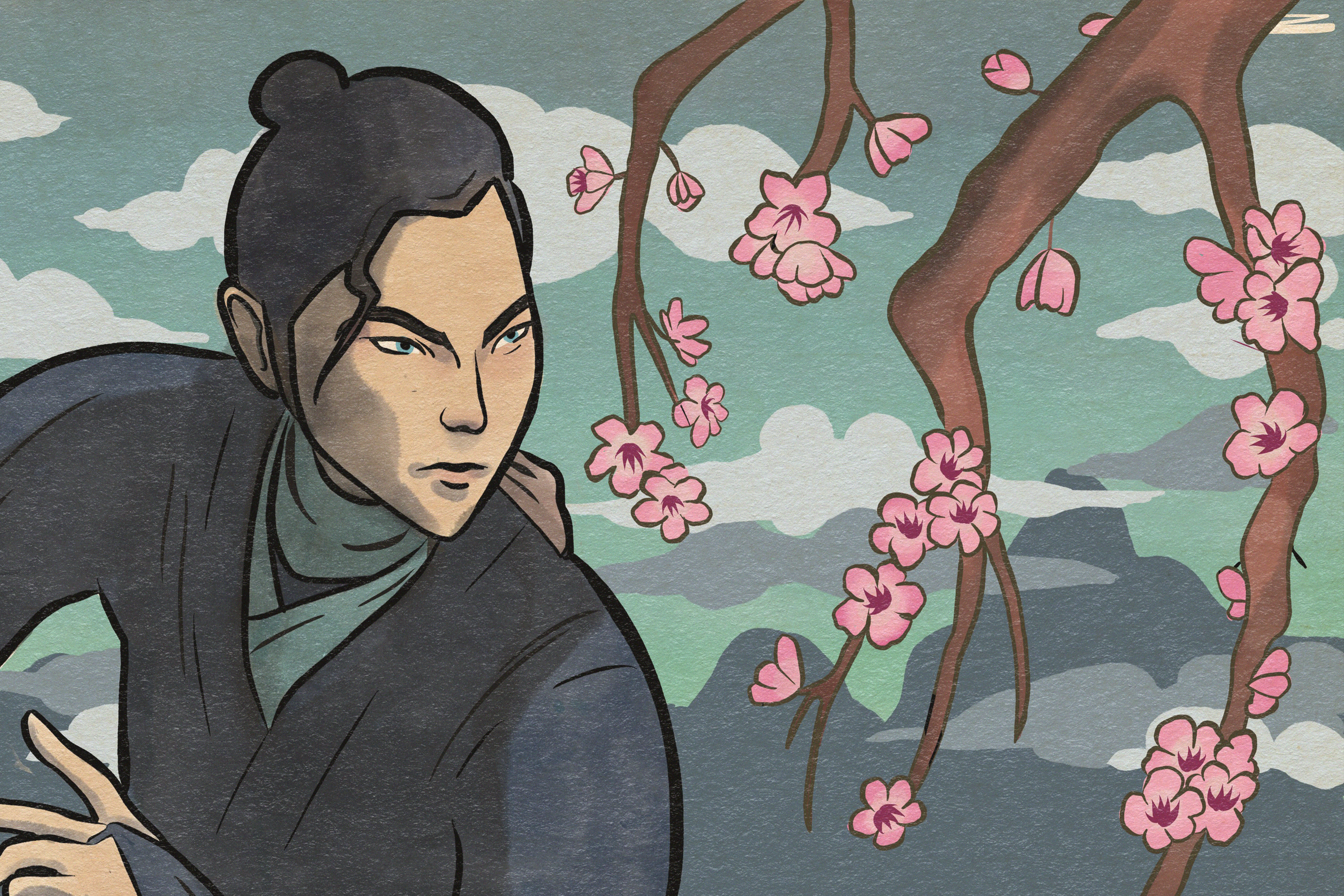Blue Eye Samurai beautifully develops a female lead, creating her as a capable character through her own struggles and inherent power.
Blue Eye Samurai has been an incredible journey through its excellent female heroine, Mizu. The show takes place in Japan’s Edo period (1603-1867), following a mixed-race samurai named Mizu, who bears the shame of her blue eyes.
Becoming the apprentice of a blind blacksmith, Mizu embarks on an incredible journey, not only honing her skills as a samurai in search of revenge, but coming to terms with her identity as a woman in a male-dominated world. With eight 40-minute episodes and a confirmed second season, the show deeply develops Mizu’s gender identity, with her feminine gender rather ambiguous.
In the first episode, audiences are clearly able to see that Mizu is often perceived as a man, and even the audience is led to believe that she is a man. It is not until the later end of the episode, when we see her bathing in a waterfall, that it is confirmed that Mizu is a woman, but her gender is still unclear.
In fact, it is common throughout the season as a whole that when Mizu is in the water do we learn the most about her gender identity. There is an inherent fluidity in how Mizu presents herself, and how other characters and the world around her perceive such.
In a particular scene, Mizu’s mother compares her to water. She claims that everyone is looking for a girl, so Mizu “must be a boy,” making her as impossible to catch as water. The scene depicts Mizu’s mother squeezing a sponge, and failing to catch the water dripping, presenting that Mizu’s altered gender makes her difficult to find. The audience engages most with Mizu’s gender when she is in the water, with the third episode presenting a montage of Mizu struggling with her femininity since she was young. In the very first few episodes, we can see the first instance Mizu decided to bind her breasts, a habit she continued into adulthood, often only releasing the binding in water.
On the outside, Mizu comes across as a battle-hardened samurai. She is cold and calculated, not only in battle, but around others as well. In the first few episodes, she comes across as a difficult character to root for, considering that she lacks empathy for those around her.
As much as Ringo – the primary side-character – is relevant as a needed comic relief, his kind and laidback character best juxtaposes Mizu’s apathetic and, at times, outright cruel nature. Mizu is entirely centered around her revenge and killing Abijah Fowler. Because of Japan’s isolation during the Edo period, Mizu’s blue eyes are considered disfigurement, as she is characterized as an onryõ. As the main antagonist, Fowler is an Irish arms dealer based in Japan, and is demonized throughout the season. Similar to how Mizu is discredited for her blue eyes, Fowler is antagonized for his blue eyes and reddened hair.
The presence of Ringo and other female side characters allow Mizu to grow as a character. Throughout the season, we are able to see how Mizu not only opens up about her own struggles as a woman, but also learns to sympathize with and understand the people around her.
Similarly to how we see Mizu present as a woman when in the water, there are instances when we can see her fighting; in such moments, the audience is able to see more of her internalized identity. For example, in the scene when Mizu defends Madame Kaji’s brothel, we can see her at a happier point in their life, married and raising horses with their ex-husband. We as an audience can see a time when Mizu was able to achieve romance and intimacy with a man, even though they admit they had always wanted to be a man rather than a woman.
The audience sees many more instances in which Mizu interacts with women. She struggles to sympathize with the princess Akemi, who has a supposed perfect life compared to Mizu, or the deaf and mute young woman Kinuyo, who was sold from a brothel to the crime lord Boss Hamata. Though both characters’ stories are very different, in both instances we can see Mizu actively engage with how other women are treated in a prominently masculine world.
Watching Mizu interact with herself and her own gender, the audience is able to construct Mizu’s identity beyond the fact she is the Blue Eye Samurai. In the bathing scenes, Mizu explores her past and recalls the trauma of growing up as the child of a “whore.” In such intimate scenes, the audience is able to watch her develop her own identity as a woman. As much as her gender is ambiguous throughout the season, particularly at the beginning, we are able to watch as she accepts her own sense as a woman in a man’s world. Like the other women around her, she finds a way to manipulate both her body and her skills – such as in fighting – to achieve what she wants.
Throughout the season, we watch Mizu slowly develop from the cold and rather heartless demon she is described to be, into a woman who is struggling to survive a world against all parts of her.

















